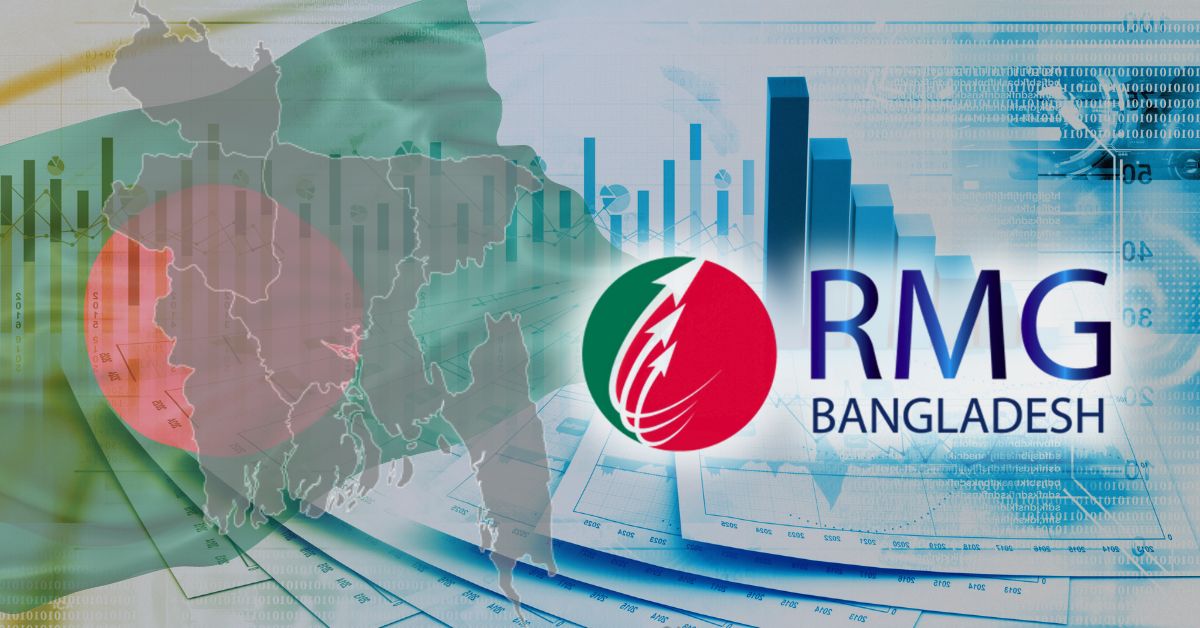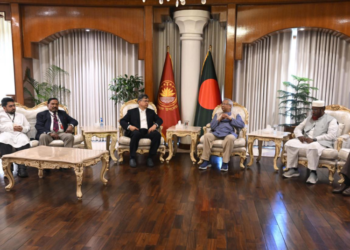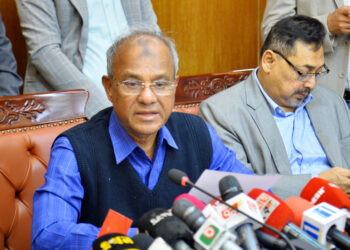Introduction
The readymade export garment(RMG) industry is the most significant manufacturing and export industry in Bangladesh. It contributes significantly to employment, income, exports, foreign exchange earnings, national output, and the overall social and economic development of the country. RMG sector become the second largest export country in the world and china is the first largest exporter country. This is the finished textile products from the clothing factories and it’s sector is one of the fastest growing sector in the Bangladesh economy, contributing vital role in GDP, employment and exports. Last few decades, the country has become one of the world’s largest garment exporters, supplying in major markets like United States, European Union and Canada. Behind the remarkable growth and development those labors have a significant role, the growth rate form 2002 to 2012 was 55%.Bangladesh’s total merchandise exports were 77% in 2002. In 2014 this rate increased and it crossed 81.13%. Four million workers are employed by the RMG industry; 85% are illiterate women from rural villages. Many Western companies contract different factories, only requesting that certain quotas be met at certain times. Companies offer subcontracting because the degree of separation removes them from liability for wage and labor violations. It is also easy to distribute production across a variety of sources. It also helps women to become entrepreneurs, creating small boutique-type industries. In recent years, working environments and conditions of the factories that produce ready-made garments have undergone criticism.
History of the RMG industry
Bangladesh population is about 171.5 Million(2023). Bangladesh is an agricultural country and most of the people depends on agriculture, specially rural people. Bangladesh’s economy fully depends on agriculture, mainly rural people. Between 2009-2010 and 2018-2019 around 18% to 13% ,as manufacturing and services sector gained prominence the share of agriculture in GDP has decreased. On the other hand, Ready Made Garment (RMG) has emerged as the highest earner of foreign exchange, also become world’s second biggest exported of clothing after china.
• Early history of establishing cloth export in Bengal
The 16th and 18th centuries, when there was no Bangladesh, were when the Mughal Empire ruled over whole Bengal (Mughal era). At that time, Subah was a midpoint of the worldwide muslin and silk trades. Bengal was the center of cotton production, which is around its capital city, Dhaka. From this, the muslin began to be called “Daka,” and it also exported silk and muslin to world markets, including Europe, Indonesia, and Japan. The Dutch produce more than 50% of textiles and 80% of silks imported from Asia. After the Battle of Plassey in 1757, the British forcibly opened the market for goods and implemented protectionist policies that made restrictions on cotton cloth import. They imported raw cotton from Bangla without any tariffs, and they use it in their cloth manufacturing.
Read More: US President Donald Trump’s Reciprocal Tariff Announcement and Its Global Impact
• How the RMG sector was established in Bangladesh after 1971
Afterwards, in the British era, the news era began, and the rule of East Pakistan began; they try to dominate us in every sector. The textile industry (1947-1971) was most of the industries established in East Pakistan. In 1960, local Bengali entrepreneurs started to set up their own large textile and jute factories. Till the birth of Bangladesh, the textile sector was part of Import Substitution Industrialization (ISI). After the war, it becomes part of export-oriented industrialization (EOI), including the RMG sector. That time tea and jute were the most important for export sectors. But for the reason of the flood, those demands decrease day by day. Bangladesh was born in 1971, and in 1972, Sheikh Mujibur Rahman, who was the government, established a state-owned enterprise (SOE) called the Bangladesh Textile Mills Corporation (BTMC). But unfortunately, BTMC failed to handle the outputs of situations before 1971 and every year after 1975-76 FY, and they lost money.In 1974, one Million people died because of starvation. For the flooding of Brahmaputra River and it effected the economy. After all this, the state-owned enterprises (SOEs) converted to private sector-led industrial development. Bangladesh focused on the agricultural sector to feed poor and rural people after the liberation war. In 1978, they had only nine export-oriented garment manufacturing units. In the same year, garment exports were 10,000 shirts to a Parisian firm, and that ship went from a Bangladeshi firm. And this was the point where the Bangladesh government started to understand that this sector will play a vital role in the economy.
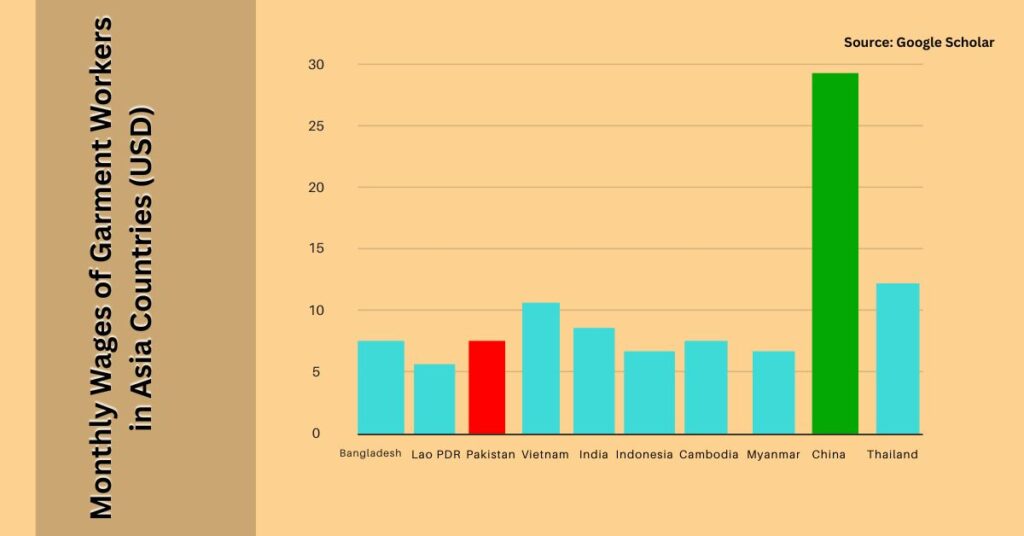
Growth of Bangladesh’s RMG industry
Ready Made Garment(RMG) is one of the fastest growing sectors. Nowadays, this sector is the most demanding sector and it change the face of Bangladesh economy. From 2021 to 2025, RMG industry sees incredible growth, buttress the position in global leader. In 2013,Bangladesh exported $23.5 Billion which is reached $47.38 Billion in 2023. On this topic, several facts can be seen behind this success of the RMG sector.
• Government Support
Government helps this sector by providing tax breaks and duty-free import and export procedures to create a favorable environment. It also help to support the RMG Sectors for growing and sustainability, focusing on skill development for the workshop to enhance competitions. They also promoting RMG Sectors sustainable practice such as green manufacturing and worker safety.
• Global Market Demand
The past 17 years, Bangladesh’s RMG sector exports more than tripled, with the global market share which increase from 2.5% to 7.9% in 2022. Now Bangladesh is the second largest exporter after china.
• Diversification and investment in technology
Bangladesh is providing sustainable practices, such as green certification (LEED), by using sustainable materials. This sector is embracing technology for effective, quality, and transparent results.
Read More:
Employment and social impact
As this sector is growing day by day, it’s starting to draw the attention of various agencies and organizations both inside and outside. As a concern, it will be difficult to survive and keep sustainability in global industry for Bangladesh. Many organizations may be involved in this place, such as consumer groups, civil society groups, labor unions, environmental groups, and human rights groups, and mostly there may be many international organizations like the UN, the World Bank, and the IMF. There may be many types of issues; they can be social, political, economical, and so on. Most of the highlighted issues are social issues.
• Child labor issues
This issue is not new in our country or in the world. For the past few decades, this issue has continually happened, and Bangladesh is not different from this. In Bangladesh it is calculated that
•Underage children are involved as employees, about 4.7 million (2022-2023).
•In rural areas, 83% of children work in agriculture.
•In urban areas, 17% of children work as domestic help, break-breakers, manufacturers, and so on.
•Low Wages and Income in the Bangladesh Garment Industry
Consistent with the goals of both the SDGs and ESG, low wages, income, and benefits are some of the major social sustainability challenges facing the garment industry in Bangladesh. There are also external concerns raised about the very low wages of garment workers. Unions also demand higher wages. The government of Bangladesh (henceforth, GOB) sets minimum wages for various categories of workers. According to the Minimum Wage Ordinance 1994, apprentices and helpers are to receive BDT 500 and BDT 930 per month, respectively. Often female helpers are discriminated against in terms of wage levels, and these wages are also often fixed far below the minimum wage rate. A survey conducted in 1998 showed that 73% of female helpers, as opposed to 15% of their male counterparts, did not receive even the minimum wage. Table 5 reports the monthly wage of garment sector workers for ten Asian countries that are competitors to each other. The top monthly wage is reported for China at USD 491, which is distantly followed by Thailand at USD 228. Bangladesh ranks 6th from the top with an average wage of USD 163 per month, and the lowest wage is for Lao PDR and Pakistan. In terms of distributional properties among the ten countries, the median wage is USD 172.5, which divides the distribution into two equal parts, with half of the countries above the median and half below. Bangladesh is below the median monthly wage. The distribution has wide variation across countries, as shown by a large standard deviation of 108.69.
•Factory accidents and workplace safety
As a manufacturing sector in Bangladesh, it is generally and industrially prone to different deadly industrial accidents over many years. The most devastating industrial accident happened in 2013 with the collapse of the multistory Rana Plaza commercial building that housed several garment factories making and supplying Western brands. The collapse apparently happened due to structural failures, resulting in the death of more than 1100 workers and injuring many, and was one of the deadliest in the country’s history (Paton, 2021). Just before this accident, another major industrial accident happened in 2012 with a fire in the garment factory named Tazreen Fashion factory that killed 112 workers and injured more than 200. These two major accidents, back-to-back, caused uproar both at home and abroad. Many global apparel sourcing companies were also blamed for their system of contracting and subcontracting, which made it difficult to identify the sourcing companies whose products these factories are catering to. In addition, there was much delay in accountability and in giving compensation to the victims or their surviving family members.
•Worker Health Issues and Poor Working Environment
The poor work environment may contribute to worker health issues. Many factories may be cramped with workers in very congested and overcrowded facilities with poor ventilation, inadequate fire exits, and poor sanitary conditions. Many garment factories in Bangladesh often compromise on the health and safety of workers because of the pressure from ordering companies to observe strict deadlines. Paul-Majumder and Begum (2000) found that workers, particularly female workers, face a variety of occupational health risks in their workplace, such as poor health benefits, lack of health facilities inside the factories, lack of insurance against accidents and/or sickness and disease, poorly ventilated and congested workplaces, inadequate ventilation in the rooms, dust and toxic materials floating in the air, and inadequate fire exits, among others, that adversely affect their health. In addition, there is very little support for providing medical and mental health support.
• Long Working Hours
As a worker, no one can accept long hours of work and low wages. It may voluntarily work long hours to make ends meet to support their poor families. The RMG factories claim to operate one eight-hour shift six days a week. However, available information shows that women are virtually compelled to work more hours and sometimes work late into the evening; sometimes they work until 3 o’clock in the morning and report back to start work again five hours later at 8 o’clock in the morning. They are asked to work whole months at a time, violating the Factory Act, which stipulates that no employee should work more than ten days consecutively without a break.
Economic contribution of the RMG sector
Ready made Garment (RMG) play a significant role in full GDP of Bangladesh. Gross Domestic Product (GDP) is the most common measure for the size of economy and measures the value of total final output of goods and services produced.
•Contribution to GDP
Ready made Garment (RMG) play a significant role in full GDP of Bangladesh. Gross Domestic Product (GDP) is the most common measure for the size of economy and measures the value of total final output of goods and services produced.
•In Bangladesh’s GDP Textile and Garment sector contributes more than 13%
•From the RMG sector, Bangladesh’s total export revenue gets over 80%.
•Fiscal Year 2022-2023 export amounted over $47 Billion
•Fiscal Year 2023-2024 the amount was more than $43 Billion
On the other hand, if we talk about the full GDP of Bangladesh, the rate is
•2020-2021 fiscal year was 6.94%
•2021-2022 the growth rate was 7%
•2022-2023 the rate was 5.78%
•2023-2024 the rate was 4.22%
•2024-present the rate was 4.1% (World Bank)
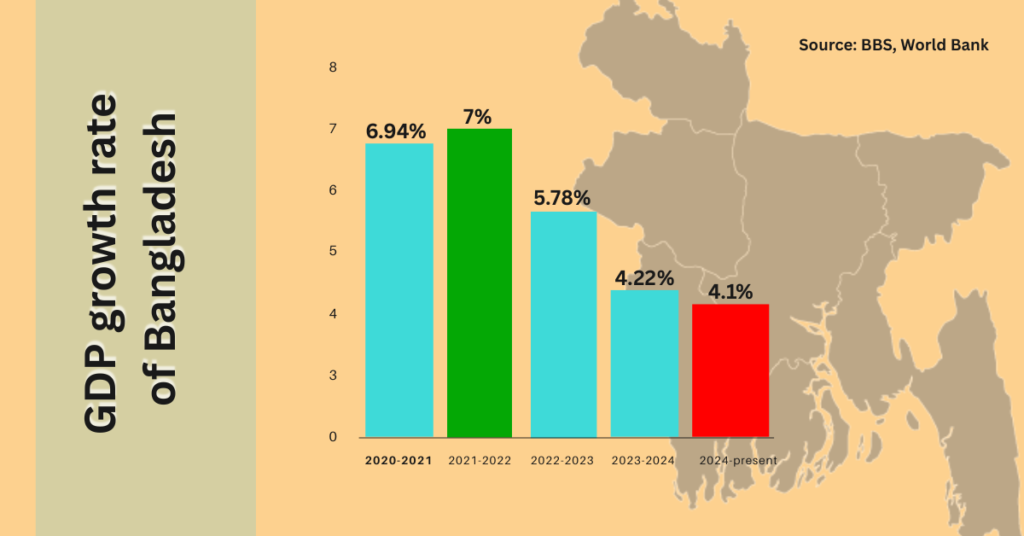
Challenges of the RMG sector
Bangladesh’s RMG sector faces several challenges, including
•Workforce shortage
After COVID-19, many workers, specifically women workers, moved to other sectors for better living in Dhaka, which affected all workplaces, production capacity, and export targets.
•Compliance and sustainability
As this sector has a remarkable demand in the international market, buyers are increasingly demanding stricter compliance and sustainability standards, as well as significant investments from manufacturers.
•Banking sector constraints
As Bangladesh is a developing country, they don’t have the ability to give lots of loans. That’s why it affected several industries because limited financing options and high loan burdens hinder export bargaining power in the global market. After all this, still now there are several challenges, such as energy crisis and rising costs, global economic instability, and dependence on imported raw materials, all of which need to be faced and overcome.
What will be the future of the RMG sector in Bangladesh?
In recent years, the RMG sector has given their best, and we can see the results of their hard work. As they are growing day by day, this sector needs to face several challenges and also will get more opportunities.
•Technology Upgradation and Innovation
Nowadays technology is developed, and this is the best opportunity for all sectors employees. It will help them to work smartly within less time. In this sector, Adoption Industry 4.0 is used for many types of work, including automation, AI, and data analytics, which will enhance efficiency, reduce costs, and improve quality.
• Strengthening the “Made in Bangladesh” Brand
This helps to improve the quality, and they will be able to think creatively and use other countries cultures; also, they are representing our tradition and culture. Nowadays, they focusing ethical standards and sustainable practices Which can be enhance the reputation of the “Made in Bangladesh” brand.
Several will come day by day, which will make this more and more developed. Product diversification, market diversification, collaboration and partnerships, focus on skill development, circular economy, and so on—those are the other opportunities for this sector.
Conclusion
The ready-made garment (RMG) sector is a vital part of Bangladesh. It has several contributions to our economy, GDP growth, and employment for young people and also helps to get more and more foreign exchange earnings. The time from 2021 to 2025 this time is a remarkable and incredible shining time for the industry. It faces lots of challenges and overcomes all of them; now it’s the world’s second largest exporter of clothes after China. It also shows the world our country’s culture and traditions. For growth, Bangladesh must focus on technology improvement, sustainability, market demands, and also product diversification. By using a proper and perfect strategy, it can grow day by day.
Reference:
Google Scholar
Wikipedia
BBS
The World Bank
The Daily Star
Share via:

